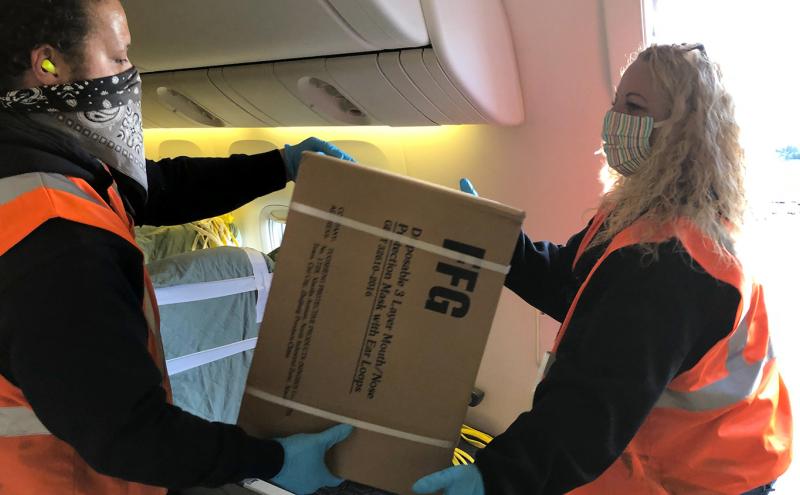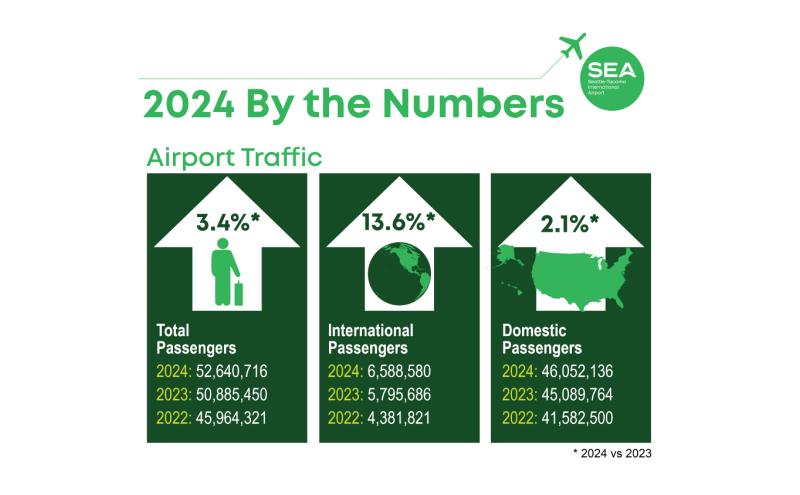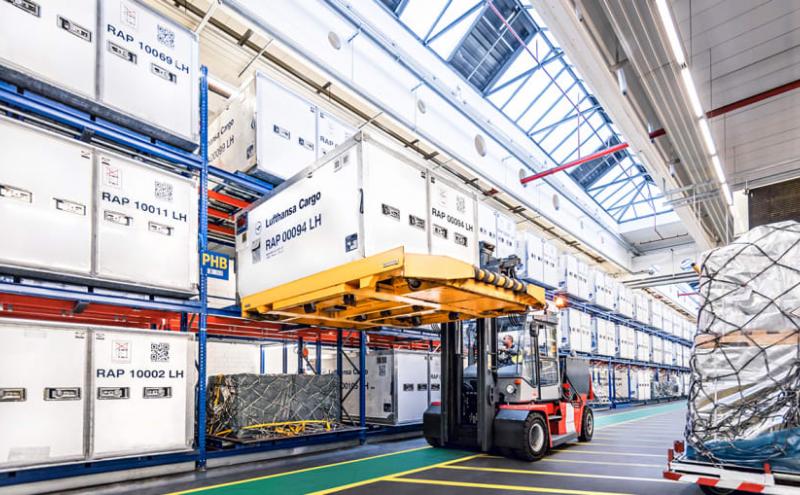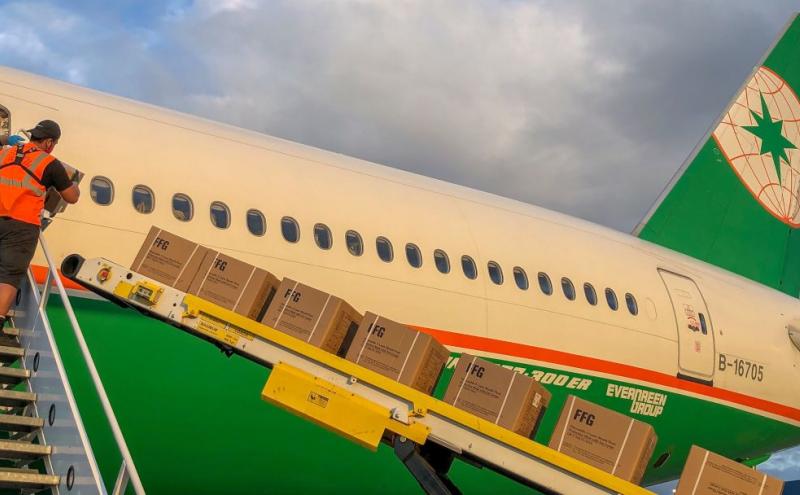
Passenger activity at Seattle-Tacoma International Airport (SEA) mirrored broader economic trends in 2020. Domestic air cargo volume soared nearly 15 percent, reflecting demand for e-commerce goods, pandemic response, medical supplies, and recent vaccine distribution by freighters and belly cargo. Passenger traffic dropped 61.3 percent to just over 20 million travelers, a level not seen at SEA since 1994. Before the pandemic, SEA experienced nine straight years of record-setting passenger growth.
“Certainly 2020 has been a monumental year for SEA Airport, though not in any way we imagined a year ago,” said Lance Lyttle, Managing Director of SEA Airport. “What looked like a year of exceptional advancements for one of the nation’s fastest-growing airports, has become instead a sobering lesson in humility, agility, and the power of good planning.”
Travelers flying through SEA shared their stories with us this year. Pre-pandemic, a typical year at our airport sees more leisure than business travel. In our essential travel series, passengers shared their travel stories, including a family who moved out of the country for a military job, a woman and her young baby who came to Seattle to care for a parent, a traveling nurse taking her skills to an in-need community, and family business owners relocating critical equipment.
By the Numbers – FlyHealthy@SEA
SEA instituted the globally-accredited FlyHealthy@SEA program to keep passengers, employees, and the community safe. Tracking numbers from this first-time, on-going effort include:
- Over 3,132 gallons of hand sanitizer
- 2,115 containers of sanitizer wipes
- Over 11,000 free masks distributed by the Mask UP SEA Street Team
- Over 290 hand sanitizer stations throughout the terminal
- Nearly 650 plastic protective barriers
- Almost 8.000 signs and floor decals with reminders for physical distancing
- Most airport dining and retail tenants are open for business, which is a dramatic recovery from when two-thirds temporarily closed during the height of the pandemic’s shutdown
- First West Coast airport to earn the Global Health Accreditation from the Airports Council International (ACI) Airport Health Accreditation program and also achieved the GBAC STAR accreditation on cleaning, disinfection, and infectious disease prevention
By the Numbers – Passengers
- Overall, 20,061,507 total passengers went through SEA Airport in 2020. The 61.3% decline tracks the baseline projections from the Port of Seattle during the middle of the pandemic. This compares to the 2019 overall passenger number of 51,829,239, which was the ninth straight year SEA set a record for total passengers jumping to the eighth busiest airport in the U.S.
- The last time SEA was at the 2020 level of overall passengers was 1994 when it passed 20 million for the first time at 20,972,819.
- International passenger traffic was down 76.1% in 2020 due to the widespread pandemic restrictions around the world. Domestic passengers were down 59.5% for the year.
- In April 2020, SEA experienced its lowest passenger volumes since 1967. Domestic traffic was down 93% and international traffic was down 97% compared to the previous year.
- Total April passenger traffic was 259,153 compared to 2019 with 4,033,516. The last time SEA saw that few passengers in April was in 1967 at 268,291.
- The weekly average of outbound travelers going through security checkpoints hit the lowest point in 2020 the week of April 12 at 2,600 travelers per day. This compares to pre-pandemic levels the prior year of departing passenger levels up to 55,000 during April 2019. See more details on our SEA Airport Weekly Dashboard.
Cargo
- Overall air cargo recorded its ninth consecutive year of growth, increasing 0.2% with 454,584 metric tons (compared to 453,549 metric tons in 2019).
- Domestic air cargo hit a record 351,352 metric tons, a 14.6% increase, with the biggest bump in e-commerce/express deliveries. SEA is the home to FedEx and Amazon air cargo services.
- International air cargo was hit dramatically, down 29.7% to 103,232 metric tons, primarily due to passenger flight suspensions with the pandemic which normally carry a large portion of goods as belly cargo.
- With that in mind, overall freighter cargo was up 17.2% with additional flights added, while belly cargo was down 33.2 percent.
Operations
- Operations (aircraft landings and departures) were down 34.3% in 2020 with 296,048 compared to 2019 at 450,487.
- The Dining and Retail program ended 2020 with 72% of the units open. This rate has been impacted due to the Governor’s COVID-19 mandate.
- These dining and retail units opened in 2020:
- Mi Casa Cantina
- Trailhead BBQ & Bar
- Capitol Hill Food Hall
- Lady Yum
- VYNE Washington Tasting Room
- Exofficio
- Beecher’s Annex
- Sourced Market
- Planewear
- Caffe D’arte on Concourse A
Select the link for more detailed statistical reports.
Forecasted Recovery
The Port of Seattle recovery estimates project 2021 to be down about 30 – 40% compared to 2019 levels. That continues to be fluid as the overall recovery continues. The forecasted return to 2019 passenger levels is not expected until 2024. The Port of Seattle continues our capital improvement plan, in fact, increased it slightly to $3.7 billion from $3.4 billion, to ensure that we stay ahead of future congestion and lead an equitable recovery. Projects hitting major milestones in 2021 include International Arrivals Facility (opening by summer), North Satellite Modernization Phase 2 (opening by end of summer), cell phone improvement lot, parking garage improvements, and other various airport projects.
Recognizing Frontline Workers
Our airport maintained safe operations due to the commitment of thousands of frontline employees, who have worked tirelessly to keep our airport safe for passengers and employees, efficient in moving people to and from their destinations, and open for essential operations like transporting goods and supplies in and out of the region. The airport is one of the largest job sites in our region. Hundreds of employers operate on-site and depend upon aviation activity for business revenue, We highlighted a few in blogs over the year including customer service, operations and maintenance, and credentials/security access/airport communications center.
“Throughout these uncertain times, the dedication of our employees is keeping our passengers and employees healthy, and our airport operational,” said Lyttle. “Because of them, our airport continues to be a lifeline for our region and community. We greatly appreciate every one of our frontline workers and thank them for their continued excellence!”
Contact
Perry Cooper | SEA Airport
206-787-4923 | [email protected]




